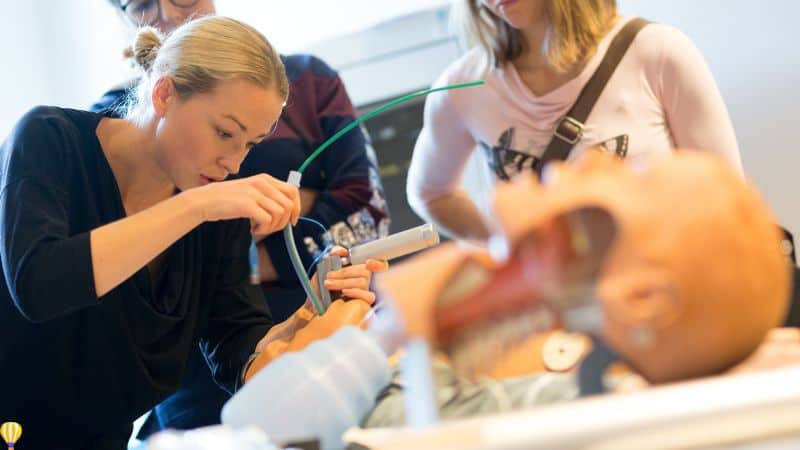I’ve been working with Atlantis Dive Resort 1for two years now, hosting workshops every six months. They’re a client I genuinely value.
When they first reached out, I wasn’t their top choice. I ranked fourth. Ahead of me were providers armed with sleek brochures and polished pitches, their sessions packed with complex frameworks like the Triangle of Leadership.
These trainers were top-notch, delivering their well-rehearsed programs without a hitch. But despite their polish, something was missing.
When we met, I brought no glossy handouts, no predefined modules. Instead, I asked two simple questions: “What do you want to achieve?” and “What strengths do you already have?”
This approach set me apart. Most training providers don’t tailor their content. They don’t dive into an organization’s specific leadership needs or long-term goals. They just unroll the same standard program for everyone.
Today, I want to share this insight: real value in training comes from customization. It’s about aligning with the client’s goals, not just delivering content.
Know the impact of your training.
Imagine you’re crafting a leadership training session. You’ve gathered leaders together, ready to inspire.
But here’s the catch: your training needs to not only enhance their leadership skills but also positively impact their customers. It’s a delicate balance, understanding that the real audience of your training efforts extends beyond the room—it reaches every customer these leaders serve.
The essence of setting clear objectives in leadership training is to establish goals that are not only measurable but also directly enhance the leaders’ ability to serve their customers better.
It’s about moving from where they are now to where they need to be, by a specific deadline.
This approach ensures the training has a clear direction and a tangible endpoint, making it easier to see progress along the way.
Effective training goals focus on enhancing specific leader behaviors—those crucial actions that directly influence team performance and customer satisfaction.
Effective training is not just about improving general skills; it’s about pinpointing the behaviors that will make the biggest difference in the day-to-day business operations and customer interactions.
This dual focus on leader and customer outcomes helps ensure that the training delivers real-world value. The objectives drive the training content, making every lesson relevant to both the leaders’ growth and their ability to make a positive impact on their customers.
Customization isn’t easy.
Yet, setting such specific and impactful goals isn’t straightforward. The challenge often lies in identifying which leader behaviors will most effectively improve customer outcomes. It requires a deep understanding of both the leaders’ current performance and the needs and expectations of their customers.
Many training programs miss the mark by setting vague or irrelevant objectives that don’t align with broader business goals or customer needs.2 This misalignment can result in training that feels disconnected from daily workplace realities and fails to produce meaningful changes in leader behavior or customer satisfaction.
Moreover, focusing solely on lag measures (like sales numbers or customer satisfaction scores) can be misleading. These outcomes, while important, only tell part of the story after it’s already happened. They don’t provide the immediate feedback needed to adjust behaviors and strategies in real time.
Effective objectives in leadership training need to balance both lag measures and lead measures.
Lead measures are those key actions and behaviors that predict and influence the lag measures. They are controllable and measurable, and they provide real-time feedback on progress.
Your mission is to craft training objectives that not only aim for improvement in lag measures but also prioritize the identification and reinforcement of lead measures. This requires trainers to be analytical and creative, looking beyond the obvious to understand what behaviors will drive success.
It involves continuous dialogue with both leaders and their teams to identify which behaviors make the biggest impact. It also means staying aligned with the ever-changing dynamics of business and customer expectations, ensuring that the training remains relevant and effective.
Set powerful training objectives.
- Begin with the end in mind. Start by clearly defining what success looks like from the perspective of both leader performance and customer satisfaction. Use the formula from X to Y by when to clarify this vision.
- Identify vital behaviors. Pinpoint the three most critical behaviors that will drive the biggest change. These should be behaviors that directly influence customer outcomes and can be measured and tracked.
- Focus on lead and lag measures. Establish clear metrics for both. Use lead measures to track progress toward each vital behavior, ensuring these metrics are actionable and responsive.
- Engage with leaders and customers. Regularly collect feedback from both groups to refine your understanding of the needs and adjust your training objectives accordingly.
- Continuously monitor and adapt. Use the feedback and data gathered to refine your objectives and training approach continuously. This ensures the training remains aligned with both leader development and customer satisfaction goals.
By following these steps, your leadership training will not just meet but exceed expectations. Build leaders who are not only more competent but also capable of significantly enhancing customer satisfaction.
This strategic approach turns leadership training into a powerful tool for organizational growth and customer delight.
Step 3: Design Your Curriculum





